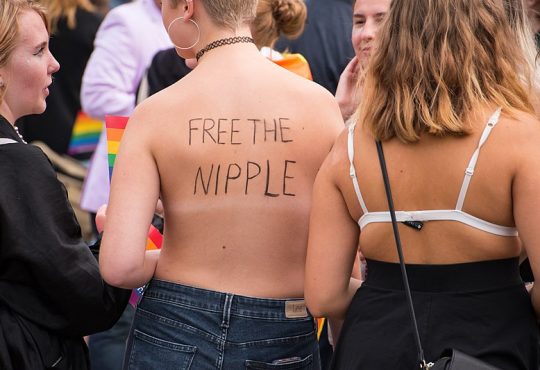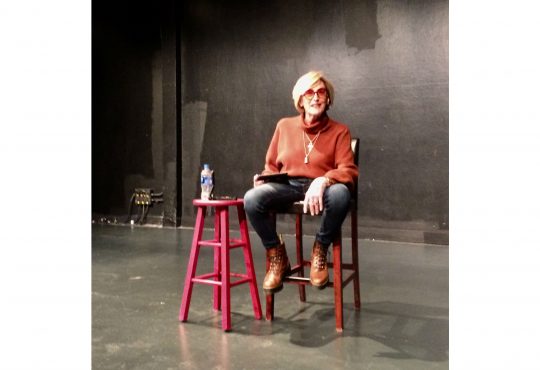Despite strides made towards equality of the sexes, toy stores are still dividing their merchandise into boys’ and girls’ sections. Not surprisingly, the aisles designed for young girls are shockingly pink, focused on beauty, fashion and family role-play, while boys’ aisles contain toys that are more centered around destruction, action and building. Commercials for stores such as Toys ‘R’ Us and Walmart depict each gender in different scenes playing separately with their relatively stereotypical toys, such as guns or baby dolls.
In fact, it seems that gender-directed advertising and manufacturing is actually worse today than it was 50 years ago. Look at the Denmark-located company The Lego Group, for instance. It seems impossible that simple, interlocking blocks could ever have a target audience more narrowly focused than innovative and playful children. That was exactly the case for the company’s ad campaign in the late eighties; their print advertisements depicted both boys and girls bursting with pride, posing with the Lego creations they had made themselves, alongside captions boasting the positive effects that building can have on kids.
However, if you fast-forward to modern day , the once-simple blocks have become immensely more complex, with countless new ideas and subcategories. In the boys’ section of a store, Lego sets showcase pirates, trains, safaris, space and other adventurous activities. Meanwhile, The Lego Group released their attempt at an alternative product for girls called “Lego Friends” in 2012, which are sets that contain mini-dolls and showcase pink and purple color schemes, rather than the toy’s usual array of primary colors.
Lego creating different sectors of their product for boys and girls is not a new tactic; selling essentially the same product in slightly different colors or themes is simply a business strategy.
However, product manufacturers most likely do not see how their ploys can have a real effect on the lives of those to whom they market. This past January, The Lego Group received criticism from an unlikely source, a (admittedly adorable) handwritten letter from 7-year-old Charlotte Benjamin. She complained that all the girl Legos do are “sit at home, go to the beach and shop” and “had no jobs” while the boy Legos “went on adventures, worked and saved people, had jobs and even swam with sharks.”
The inequality and lack of vision of The Lego Company’s gender expectations is so blatant that a first grader took it upon herself to scribble her grievances to a $14.6 billion dollar company. If Charlotte can take on the absurd marketing of toy blocks, then so can toy merchandisers.
It is true that some boys and girls naturally gravitate towards toys that are produced for their gender. Dr. Gad Saad, a professor of marketing at Concordia University, researched the theory that states all toy preferences are learned through societal conditioning. Dr. Saad found that across cultures, children in their pre-socialization stage of cognitive development (in other words, who are not yet able to be influenced by outside sources) show sex-specific inclinations. His research also concluded that hormones play a part in toy preferences; girls with highly masculine features and behavioral patterns show more masculine toy preferences than other females without said characteristics.
However, simply because some nature is involved in children’s desires for toys, does not mean that stores should continue to perpetuate expectations by dividing products up into distinct categories. Kids should be allowed, if not encouraged, to expand their horizons, especially through playtime. And though Dr. Saad supports the idea of inborn partiality towards certain toys, he still appreciates that gender roles are in part learned via the socialization that stems from offering little boys and little girls “gender-stereotyped” toys to play with. Dismantling the barrier between types of toys would only have positive effects for future generations. Young children should decide for themselves what their likes and dislikes are, not be manipulated by flashy colors associated with their gender, scenes in TV commercials or signs in stores.
On Nov. 22, a mother in England had a surge of Internet attention after tweeting a photo to @LetToysBeToys, a UK-based movement that is asking retailers to categorize children’s toys by theme or purpose, instead of gender intention. Karen Cole posted an image to Twitter of her 7-year-old daughter angrily pointing to a Tesco sign that reads “Fun Gifts for Boys.” Cole made it clear that her daughter loved superheroes and was “not impressed” about being told they were not aimed at girls. No marketing strategy should ever make kids feel left out, regardless of gender.
Some arguments go much further than the issue of inclusiveness. In Australia, The Greens political party has encouraged consumers to participate in “No Gender December,” in which parents buy children gender-neutral toys, instead of those that are typically thought to perpetuate stereotypes.
A spokesperson for the party, Larissa Waters, made broad statements claiming that seemingly innocuous aisles of segregated pink and blue actually have extraordinarily negative long-term effects, including expectations for career paths and future predictions of domestic violence.
While Waters’ opinion may be a bit extreme, The Greens party has the right intention with “No Gender December.” Children should discover their preferences and broaden their imaginations by their own volition. Parents should avoid putting their own expectations on their children by supporting them with a passive love.
If parents foster this kind of support and acceptance for their children, there is no societal boundary placed upon the child regarding any future career path, life experience or behavior expectancies, which is why toy manufacturers should get rid of separation and expectations with “boy” and “girl” toys.





